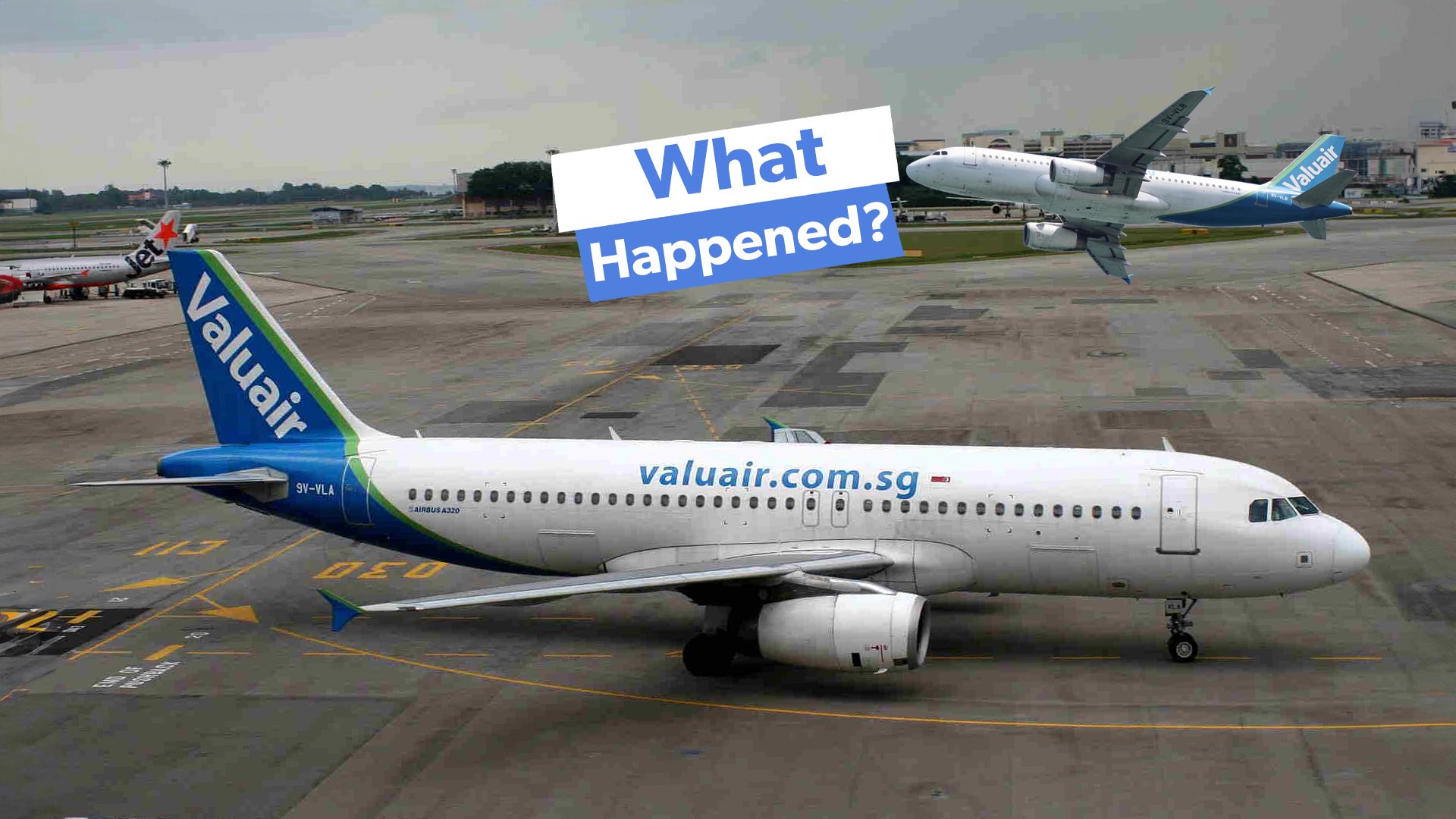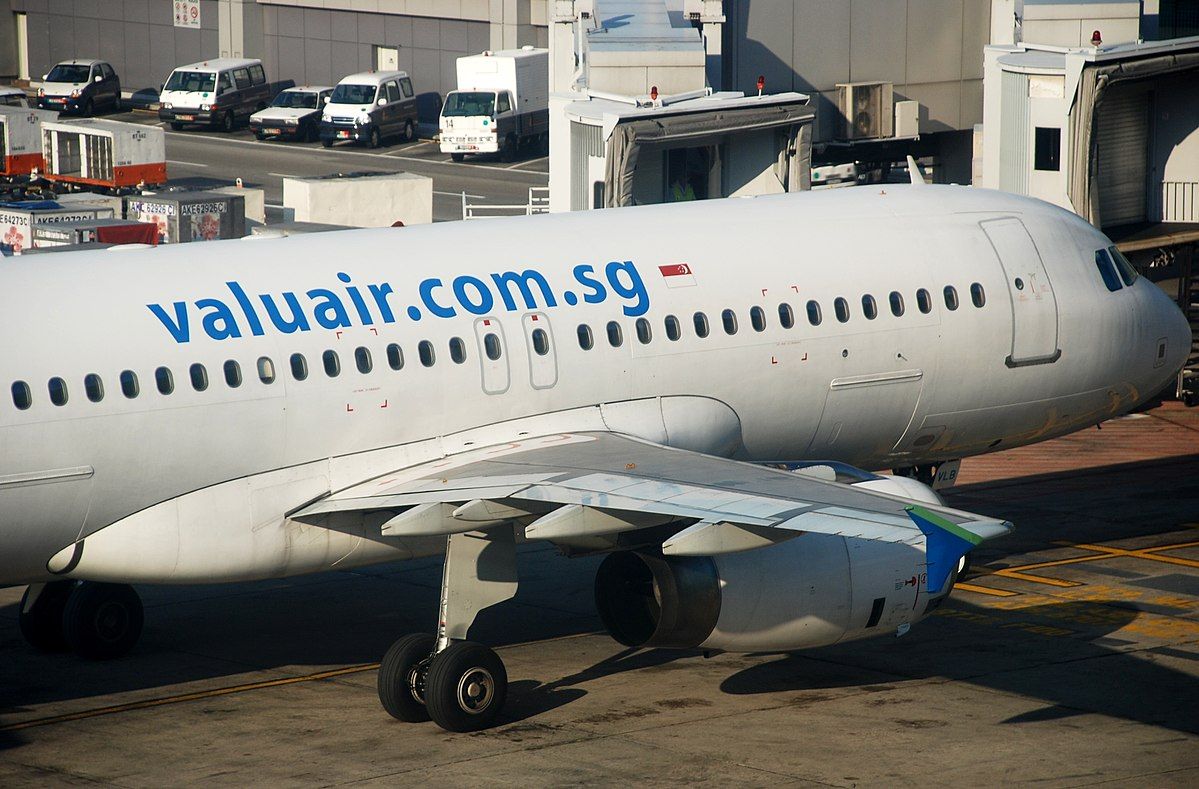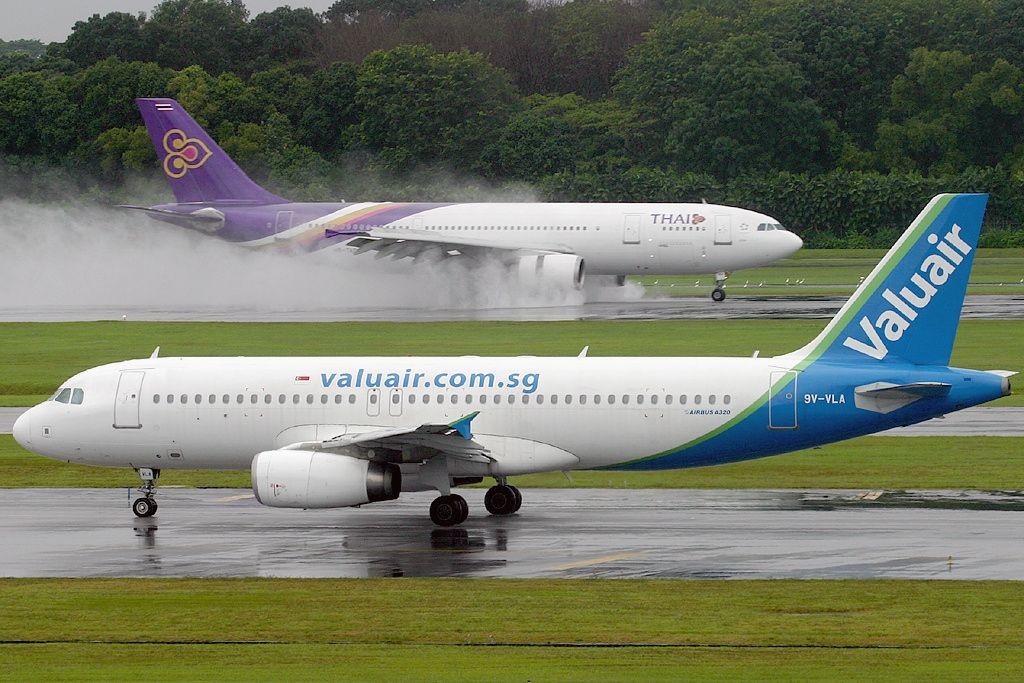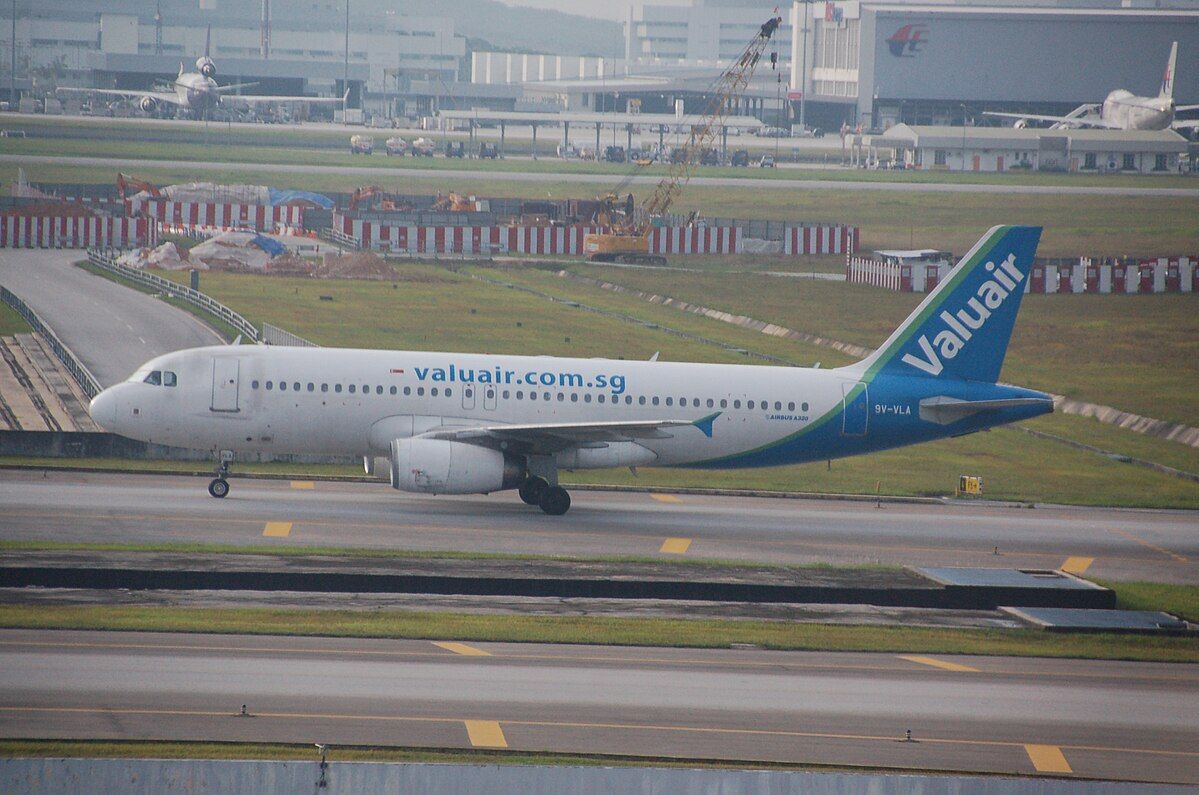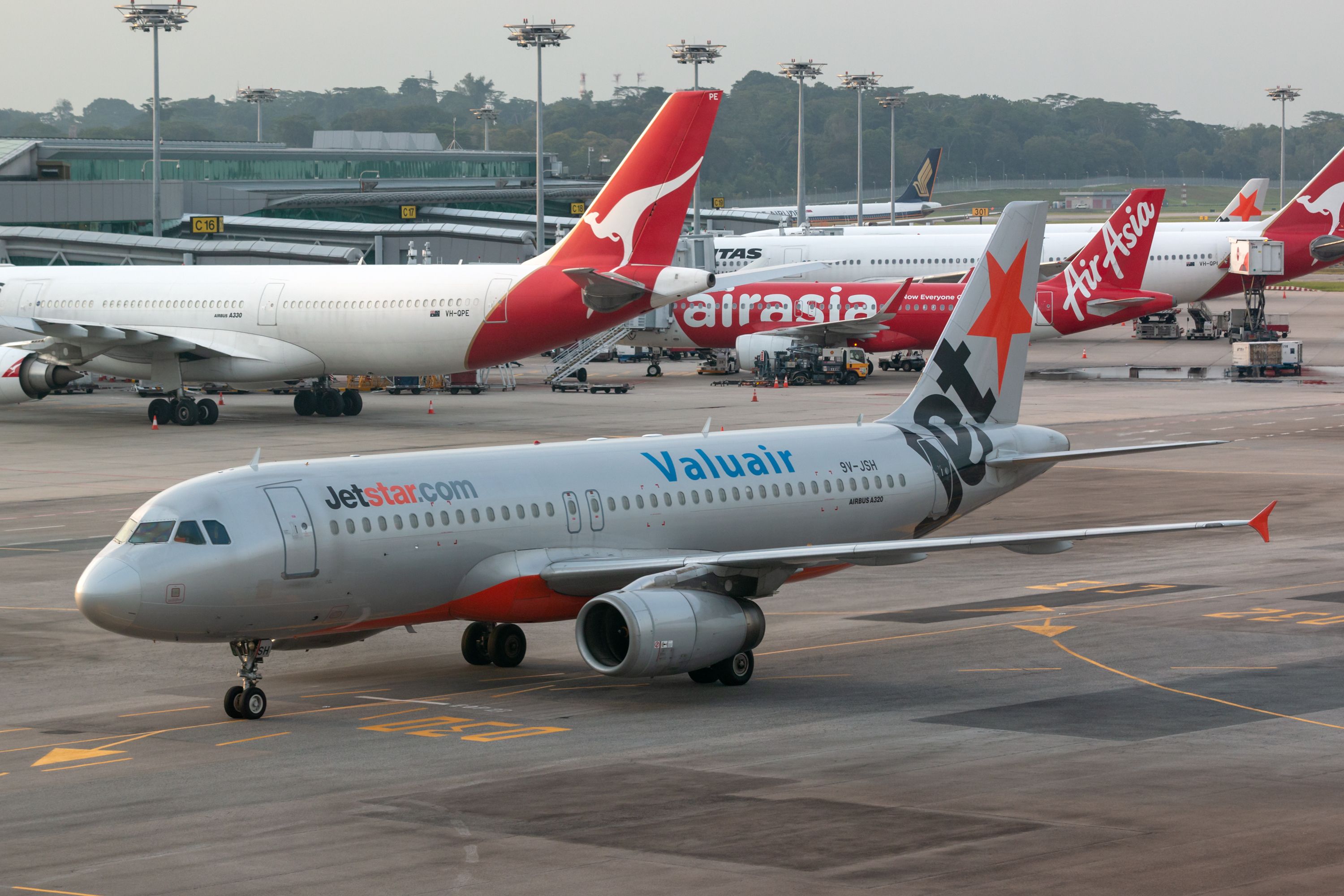Summary
- Valuair offered frills like baggage allowance and in-flight meals but struggled financially.
- Despite attempts, Valuair failed to secure funding and was forced into a merger.
- Valuair merged with Jetstar Asia to form Orange Star, keeping the brand but effectively becoming a Qantas-Jetstar Asia takeover.
As the name suggests, Valuair was a low-cost airline
. There is often a motivation for full-service airlines like ![]() Singapore Airlines
Singapore Airlines
and Qantas
to establish budget bands to target a greater market share without tarnishing their brand. While
this worked for Qantas with its budget brand, Jetstar
, it failed with Singapore Airlines’s budget brand, Valuair. Valuair only lasted around a year before Qantas’ Jetstar Asia
absorbed it and a decade before the brand was discontinued entirely. Valuair has been quickly forgotten – but what happened to Singapore Airlines’ forgotten budget brand?
What was Valuair about?
Valuair was first established and commenced flight services on May 5th, 2004. This arguably made it Singapore’s first low-cost carrier, as Tiger Airways started flight operations much later the same year (Tiger Airways was later merged with Scoot
in 2016). With the expertise of an ex-Singapore Airlines employee as its Chief Executive Officer, Valuair chose to differentiate itself by offering frills with every purchased ticket.
These attractive frills included a 20-kilogram baggage allowance
, in-flight meals, and a decently large seat pitch. The airline initially offered flight services to Bangkok and Hong Kong before rapidly expanding to destinations in Indonesia, Australia, China, and others. Valuair operated these flights with its fleet of four Airbus A320-200s
.
|
Valuair timeline: |
|
|---|---|
|
Launched: |
May 2004 |
|
Announcement of merger with Jetstar Asia: |
July 2005 |
|
Merged to form Orange Star: |
July 2005 |
|
Discontinued: |
October 2014 |
As its route network expanded, Valuair had ambitions for a fleet expansion to include widebodies like the Airbus A330s and Boeing 777s. The carrier was aiming to eventually offer non-stop flight services to more destinations in Australia
, preferably on the East Coast, and announce its low-cost presence within Northeast Asia.
What went wrong?
Valuair even paired these plans with a potential business class offering and the start of cargo operations in the future. However, with the low-cost model gaining popularity and traction in Southeast Asia in the early 2000s, Valuair competed heavily against AirAsia, Jetstar Asia, and Tiger Airways in its early years.
|
Valuair profile |
|
|---|---|
|
Head office: |
Changi Airports’ Southwest Finger of Level 3 of Terminal 1 |
|
Destinations (from Singapore): |
Thailand, China, Indonesia, Hong Kong (later only Indonesia) |
|
Initial fleet: |
Four Airbus A320-200s |
|
Frills: |
20 kg checked baggage, extra legroom |
This tough competition was coupled with the lack of a domestic market in Singapore and rising fuel prices, resulting in the budget carrier being spread financially thin as it accumulated losses. But unlike veteran Malaysia-based AirAsia
, Qantas-backed Jetstar Asia, and Singapore Airlines-backed Tiger Airways, the new startup Valuair lacked funding to maintain operations, let alone expand further.
The airline’s Chief Executive Officer, Sim Kay Wee, tried pitching to potential investors how Valuair was a wise, low-risk investment. But considering the startup’s weak competitive position in a just-settling low-cost market, the required funding never arrived. Valuair was forced to admit defeat and consider a merger to conquer the highly competitive regional scene. Additionally, according to Travel Weekly Asia, Wee stepped down as CEO after less than a year of managing the fledging carrier.
Who were the potential players?
Given the many competitors in the industry at that time, Valuair began discussions with several in an attempt to secure a lifeline. One potential lead was a merger with AirAsia, as the biggest budget carrier in Southeast Asia offered to buy Valuair for approximately S$20 million ($14.753 million) and had plans to cut off some routes, albeit they were never specified.
There were also ongoing talks with Tiger Airways. However, experts at the time emphasized no merger would ever happen between these two carriers since Tiger Airways was a strict, no-frills type of low-cost operator. That left discussions with Jetstar Asia over a possible collaboration, as the airline was seeking to grow organically or through acquisitions – and Valuair provided both opportunities. Unfortunately, talks with all these carriers eventually fell apart.
What happened afterward?
By early 2005, just a year after being established, the Valuair brand had already begun to gradually disappear, and no option to continue seemed in sight. By this time, all the airline had left in terms of flight services were destinations in Indonesia. But nearing the end of July, after months of speculation on what could happen to Valuair, the airline announced surprising plans to merge with fellow competitor Jetstar Asia.
The merger eventually formed Orange Star, the first significant consolidation of Southeast Asia’s growing low-cost carrier industry, chaired by Qantas Chief Executive Officer and Jetstar Asia’s Chairman Geoff Dixon. Even with the merger, Jetstar Asia and Valuair agreed to continue to operate their usual routes under individual brands, with minimal to no changes to services offered by either.
Examples of low-cost Southeast Asian airlines operating today:
- VietJet
- AirAsia
- Scoot
- Jetstar Asia
- Citilink
- Lion Air
- Cebu Pacific
Under the merged airline, Valuair received fresh capital of over S$50 million ($36.89 million), injected by new stakeholders, primarily from Qantas, Star Cruises, and others. With this financial lifeline, the budget carrier restarted flights in September, flying twice daily from Singapore to Jakarta. Then, in October 2005, daily flights from Singapore to Surabaya commenced, and flights to Denpasar Bali
and Medan would begin in later years.
Was it indeed a lifeline?
With fresh capital and keeping the brand Valuair, the Singaporean startup looked like it was saved on the surface. However, on the contrary, the merger was effectively a Qantas-Jetstar Asia takeover. Although tickets were sold and operations were conducted under the Valuair brand, all these flights utilized crews and in-flight practices from Jetstar Asia. The initial fleet was primarily Valuair’s, but Jetstar Asia aircraft would eventually be used.
This meant that, effectively, the only existence of Valuair was the branding, callsign, and partial fleet utilization, as everything else screamed Jetstar Asia. But why was this so? The answer lay with Indonesia, as before 2014, the Indonesian government imposed operational restrictions on foreign-owned low-cost carriers into the country. With the regulations, Jetstar Asia could not penetrate the vast Indonesian market alone, making Valuair a strategic solution and ticket-in.
Photo: Ryan Fletcher | Shutterstock
Since Valuair had already served the Indonesian market before the merger, the imposed restrictions did not apply to it. This was why only the Valuair brand was kept and why, after the merger, only flights to Indonesia were conducted, and previously operated routes to Australia, China, Hong Kong, and Thailand were never reinstated. Once the Indonesian government lifted the restrictions in October 2014, Valuair was virtually dissolved, and Jetstar Asia took over Indonesian flight services.

